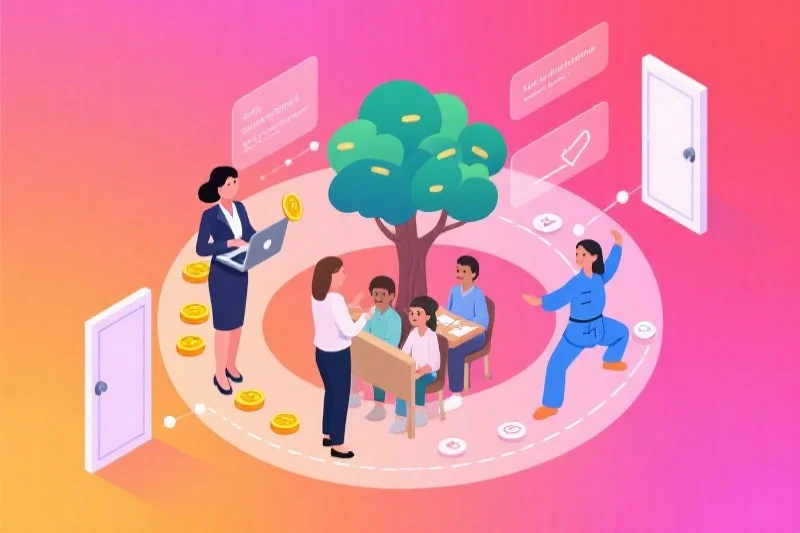Gender relations undergo profound transformations as women cross the threshold of 50—a phase marked by biological, psychological, and societal recalibrations. In the United States, where conversations about aging and equality intersect dynamically, understanding these shifts is critical for fostering healthier partnerships, self-awareness, and societal progress. This blog explores common experiences women over 50 face within gender relations, offering insights grounded in research, cultural context, and actionable strategies.
Table of Contents

1、Menopause and Its Impact on Intimacy
Biological changes, particularly menopause, redefine physical and emotional connections in gender relations. Nearly 75% of American women experience symptoms like hot flashes, mood swings, and reduced libido during this transition (Mayo Clinic, 2023). These shifts often strain romantic relationships, as partners may misinterpret decreased sexual interest as emotional detachment.
However, open communication can turn this challenge into an opportunity. Dr. Lisa Mosconi, a neuroscientist specializing in women’s health, emphasizes that “menopause is not an endpoint but a pivot point.” Couples who collaboratively explore new forms of intimacy—such as prioritizing emotional bonding or adapting sexual practices—often report strengthened connections. Tools like couples’ therapy or hormone replacement therapy (HRT) consultations can further align expectations.
2、Societal Perceptions and Ageism in Gender Relations
American culture glorifies youth, inadvertently marginalizing women over 50 in gender relations. A 2022 Pew Research study revealed that 68% of women aged 50–65 feel societal pressure to “appear younger” to maintain romantic relevance. This ageism intersects with gender relations dynamics, where older women are stereotyped as less desirable or overly assertive.
Yet, movements like #AgingUnapologetically are reshaping narratives. Celebrities such as Jennifer Lopez and Viola Davis publicly celebrate their 50s, normalizing aging as a phase of empowerment rather than decline. For everyday women, reframing self-perception—embracing silver hair, prioritizing health over societal approval—can dismantle internalized biases and foster equitable partnerships.
3、Role Reversals and Financial Autonomy
Economic independence reshapes gender relations for women over 50. Unlike previous generations, 63% of American women in this age group are primary breadwinners or contribute equally to household incomes (AARP, 2023). This financial autonomy challenges traditional power dynamics, sometimes triggering friction in long-term relationships.
Case in point: When a woman’s career peaks post-50, her partner may struggle with role adjustments—a phenomenon dubbed “the gray divorce paradox.” However, couples who view financial equity as a shared victory rather than a threat often thrive. Transparent budgeting, mutual goal-setting, and acknowledging each partner’s non-monetary contributions (e.g., caregiving) create balanced gender relations.
4、Widowhood and Re-entering the Dating Scene
With longer life expectancies, 40% of American women over 50 will outlive their spouses (U.S. Census Bureau, 2023). Re-entering the dating world introduces unique gender relations complexities, from navigating online platforms to addressing generational dating norms.
Older women often face a “double standard”: While men are praised for dating younger partners, women are scrutinized for similar choices. Yet, platforms like OurTime and SilverSingles cater specifically to mature daters, emphasizing companionship over superficial metrics. Experts advise setting clear boundaries—whether seeking casual connections or remarriage—to align with personal values.

5、Reinventing Self-Identity Beyond Caregiving Roles
Many women over 50 transition from caregiving roles (e.g., raising children, supporting aging parents) to prioritizing self-fulfillment—a shift that recalibrates gender relations. A Stanford University study (2023) found that 58% of women in this demographic experience “role liberation,” pursuing hobbies, education, or careers sidelined earlier.
While this newfound freedom can strain relationships (e.g., partners feeling neglected), it also invites reciprocity. Partners who encourage personal growth—such as supporting a return to school or joint travel plans—often experience renewed mutual respect. As author Brené Brown notes, “Vulnerability in gender relations isn’t weakness; it’s the birthplace of equitable collaboration.”
Strategies for Thriving in Gender Relations After 50
Advocate for Health Literacy: Regular check-ups, menopause education, and mental health resources (e.g., therapy) empower informed decisions.
Redefine Intimacy: Explore non-sexual bonding activities, from cooking classes to volunteer work.
Challenge Ageist Norms: Follow social media influencers promoting body positivity and age diversity.
Financial Planning: Consult advisors to ensure retirement and estate plans reflect mutual goals.
Community Building: Join groups like the Red Hat Society to forge friendships beyond romantic gender relations.
Conclusion: Gender Relations as a Catalyst for Growth
Turning 50 isn’t an expiration date—it’s an invitation to rewrite the rules of gender relations. By confronting biological changes, societal biases, and evolving identities head-on, women can cultivate relationships rooted in authenticity and mutual evolution. As American feminist Gloria Steinem famously said, “Aging is not lost youth but a new stage of opportunity and strength.” In this chapter, gender relations cease to be a battleground and instead become a bridge to deeper understanding, resilience, and joy.




